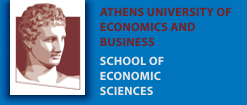| Authors |
Brock, W. and Xepapadeas, A. |
| Title |
Emerging infectious diseases and the economy: climate change, natural world preservation, and containment policies |
| Abstract |
Scientific evidence suggests that anthropogenic impacts on the environment such as land use changes and climate change promote the emergence of infectious diseases in humans. We develop a two-region epidemic-economic (epi-econ) model which unifies short-run disease containment policies with long-run policies which could control the drivers and the severity of infectious diseases. We structure our paper by linking a susceptible-infected-susceptible (SIS) model with an economic model which includes land use choices for agriculture and climate change. In the SIS model the contact number depends on short-run containment policies (e.g., lockdown, social distancing, vaccination), and the long-run policies affecting land use and the preservation of the natural world, and climate change. Utility in each region is determined by a composite consumption good produced by labor, land devoted to agriculture, and energy. Climate change and land use changes which reduce the natural world have an additional cost in terms of infectious disease since they might increase the contact number in the long run. We provide a deterministic solution as a benchmark and we compare it with outcomes derived under ambiguity associated with important parameters of the epi-econ model and ambiguity aversion. |
| Creation Date |
2022-01-29 |
| Keywords |
infectious diseases, SIS model, natural world, climate change, containment policy, Nash equilibrium |
| Classification JEL |
I18, Q54, D81 |
| File |
BX.EID.29January2022.pdf (524288 bytes) |
| File-Function |
First version |
|
Copyright © 2009 [D.I.E.S.S. A.U.E.B.]. All rights reserved.
|

